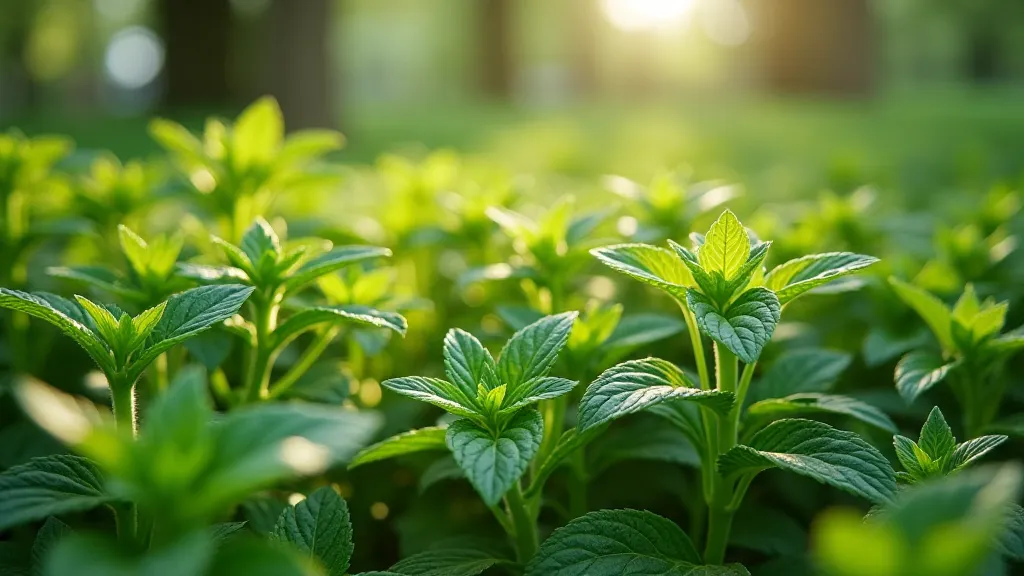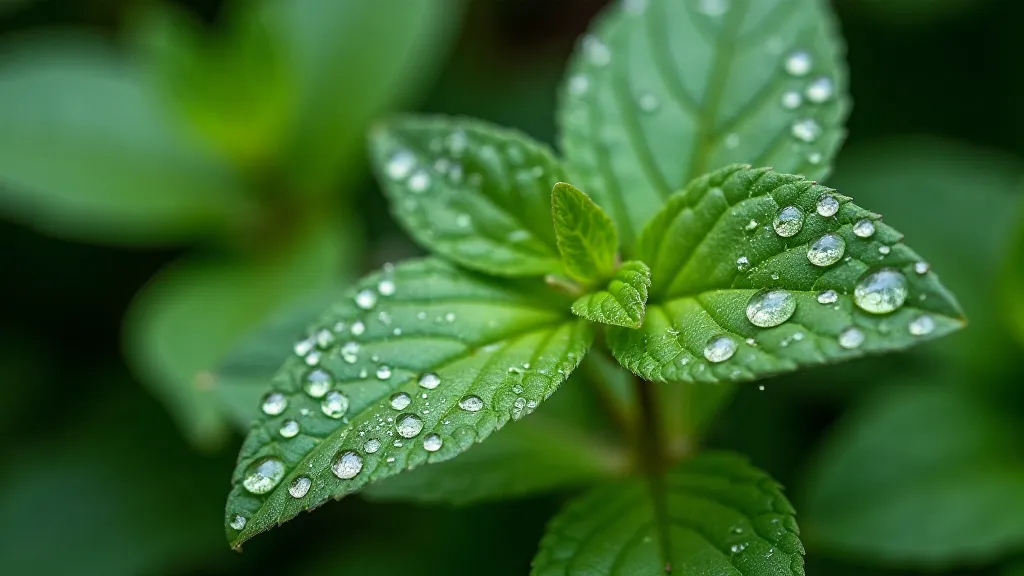The Silent Symphony: Exploring the Ultrasonic Frequencies of Mint Varieties
There's a profound beauty in understanding the things that exist just beyond our perception. Like the subtle vibrations of an antique accordion, a meticulously crafted instrument that sings with the ghosts of past musicians, many wonders of the natural world operate just outside the range of our everyday senses. For years, we're accustomed to thinking of herbs as primarily defined by their fragrance – the bright burst of peppermint, the warm embrace of spearmint, the intriguing complexity of chocolate mint. But recent research is revealing a far more complex reality: mint varieties, it seems, are singing to the world, broadcasting unique ultrasonic frequencies that potentially influence pollinator behavior. It's a silent symphony, and learning to listen is transforming our understanding of herb gardening and the delicate ecosystems they support.
My own fascination with hidden intricacies began with my grandfather, a restorer of antique accordions. The workshop was a haven of aged wood, bellows leather, and the faint scent of beeswax. He’s taught me that true beauty isn’t always visible; it's often buried beneath layers of history, requiring patience, skill, and a deep reverence for the craftsmanship of another era. Each button, each key, was a testament to the maker's dedication, a tangible link to the past. He always said, "Listen to the instrument, child. It's telling you its story." I'm slowly learning to apply that same philosophy to the plants around me – not just seeing their leaves, but sensing the intricate conversations they’ve always been having.
The Science of the Silent Song
The phenomenon of ultrasonic emissions from plants isn't entirely new. We've known for some time that various plants emit sounds, often in response to stress or damage. However, recent studies focusing on mint varieties – particularly those grown for medicinal and culinary purposes – have revealed a surprising level of specificity. Different mint species, and even different cultivars within those species, are producing distinct ultrasonic frequency patterns. These frequencies, well above the range of human hearing, are potentially being perceived by pollinators like bees and hoverflies.
The mechanism behind these emissions is still being investigated. It's believed that cavitation – the formation and rapid collapse of tiny bubbles in the plant's vascular system – plays a crucial role. This cavitation can be triggered by environmental factors like temperature, light, and even the presence of herbivores. The resulting vibrations are then amplified by the plant's structure, generating the ultrasonic frequencies. While the exact function of these emissions is still unclear, researchers hypothesize that they may act as a form of communication, attracting pollinators or even alerting other plants to potential threats.

Cultivating a Deeper Connection: Mint Varieties and Their Unique Frequencies
So, how does this newfound knowledge affect the practicalities of herb gardening? While we can’t readily *hear* these ultrasonic frequencies, understanding their potential impact can inform our cultivation practices and foster a more sustainable approach. For the passionate gardener seeking to attract pollinators, careful selection of mint varieties becomes even more critical.
Consider peppermint (Mentha x piperita), a vigorous grower with a distinctive, refreshing scent. Studies suggest it emits frequencies that are particularly attractive to certain bee species. Spearmint (Mentha spicata), prized for its milder, sweeter flavor, appears to have a slightly different ultrasonic profile, potentially drawing in different pollinators. Chocolate mint (Mentha × piperita 'Chocolate'), a fascinating hybrid with its rich, cocoa-like aroma, might be emitting frequencies that appeal to a broader range of insects.
It’s not just about selecting the "right" variety, though. Environmental factors also play a significant role in shaping the ultrasonic emissions. Healthy, well-nourished plants tend to emit stronger, more consistent frequencies. Providing adequate water, sunlight, and fertile soil is paramount. Furthermore, minimizing stress – from pests, diseases, or harsh weather conditions – can help maintain the plant's ability to communicate effectively.
Restoration and Preservation: Analogies in the Garden and the Workshop
There's a remarkable parallel between restoring an antique accordion and cultivating a healthy herb garden. Both require a deep understanding of the materials, the construction, and the subtle forces that shape their integrity. With an accordion, you might carefully clean corroded metal, repair cracked bellows, or re-glue loose keys, all with the goal of resurrecting the instrument’s original voice. With a mint plant, you might amend the soil to improve drainage, provide shade during the hottest part of the day, or prune back overgrown stems to encourage new growth.
The mindset is similar: a respect for the history and the inherent qualities of the object, a willingness to invest time and effort, and a quiet satisfaction in bringing something beautiful back to life. Both endeavors remind us that true value lies not just in the final product, but in the journey of understanding and preservation.

Beyond the Scent: A Holistic Approach to Herb Gardening
For too long, our understanding of herbs has been largely confined to their scent and flavor. While these qualities are undoubtedly important, they represent only a fraction of the story. The discovery of ultrasonic emissions has opened a new window into the complex lives of these plants, revealing a hidden world of communication and interaction.
Moving forward, a holistic approach to herb gardening – one that considers not only the visible qualities but also the invisible signals – will be essential for creating thriving ecosystems and fostering a deeper connection with the natural world. It’s an invitation to listen more attentively, to observe more keenly, and to appreciate the profound beauty of the silent symphony all around us.
Perhaps, just as my grandfather taught me to listen to the accordion’s song, we can all learn to listen to the subtle hum of the herb garden – a silent language of life, resilience, and interconnectedness. It’s a language that, once understood, enriches our understanding of the world and our place within it.





